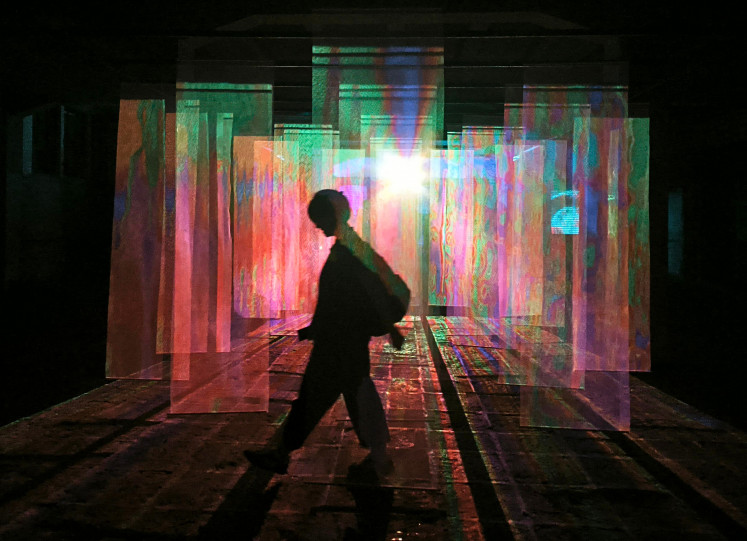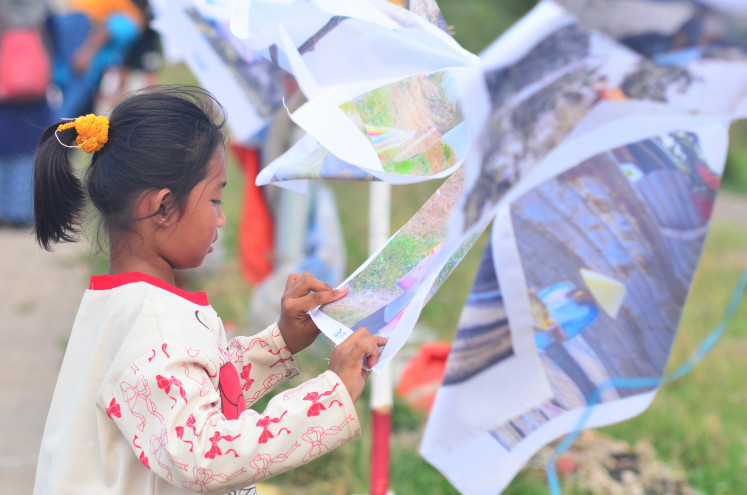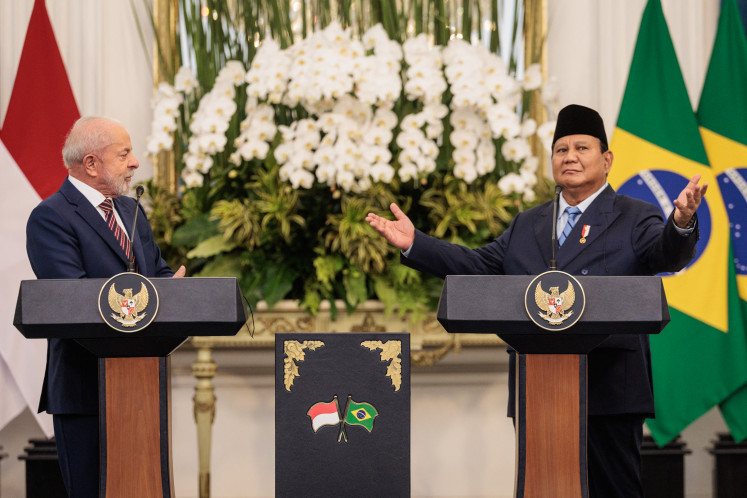Popular Reads
Top Results
Can't find what you're looking for?
View all search resultsPopular Reads
Top Results
Can't find what you're looking for?
View all search resultsBringing ancient tapestries back to life in Belgium
Change text size
Gift Premium Articles
to Anyone
T
he painstaking job of restoring some of the world's finest ancient tapestries, stitch by stitch, is not for the highly strung or restless.
Returning to its former glory the kind of creation that adorns a cathedral wall or is displayed at a world-renowned museum can take more than a year for tapestry restorers at Royal Manufacturers De Wit.
Tucked away in an elegant medieval monks' residence in Belgium, head restorer Veerle De Wachter and her white-coated, all-female team of 15 labour away with needle and thread, adding thousands of stitches to a single piece.
"Someone who is nervous or excitable would never manage it," she tells AFP, seated in front of a vast wall stacked with bundles of thread, a colourful reminder of the days when the company produced its own tapestries.
The work calls for a demanding degree of focus, knowledge of fabrics and thoroughness, she adds.
"You need a calm person, who can work in a concentrated manner without being distracted with what's going on around them."
As well as the traditional meticulous craftsmanship, resuscitating the faded scenes and preparing them for the future ravages of time requires modern technology.
Read also: Total passes Dayak tapestry tradition to next generation
Million-dollar project
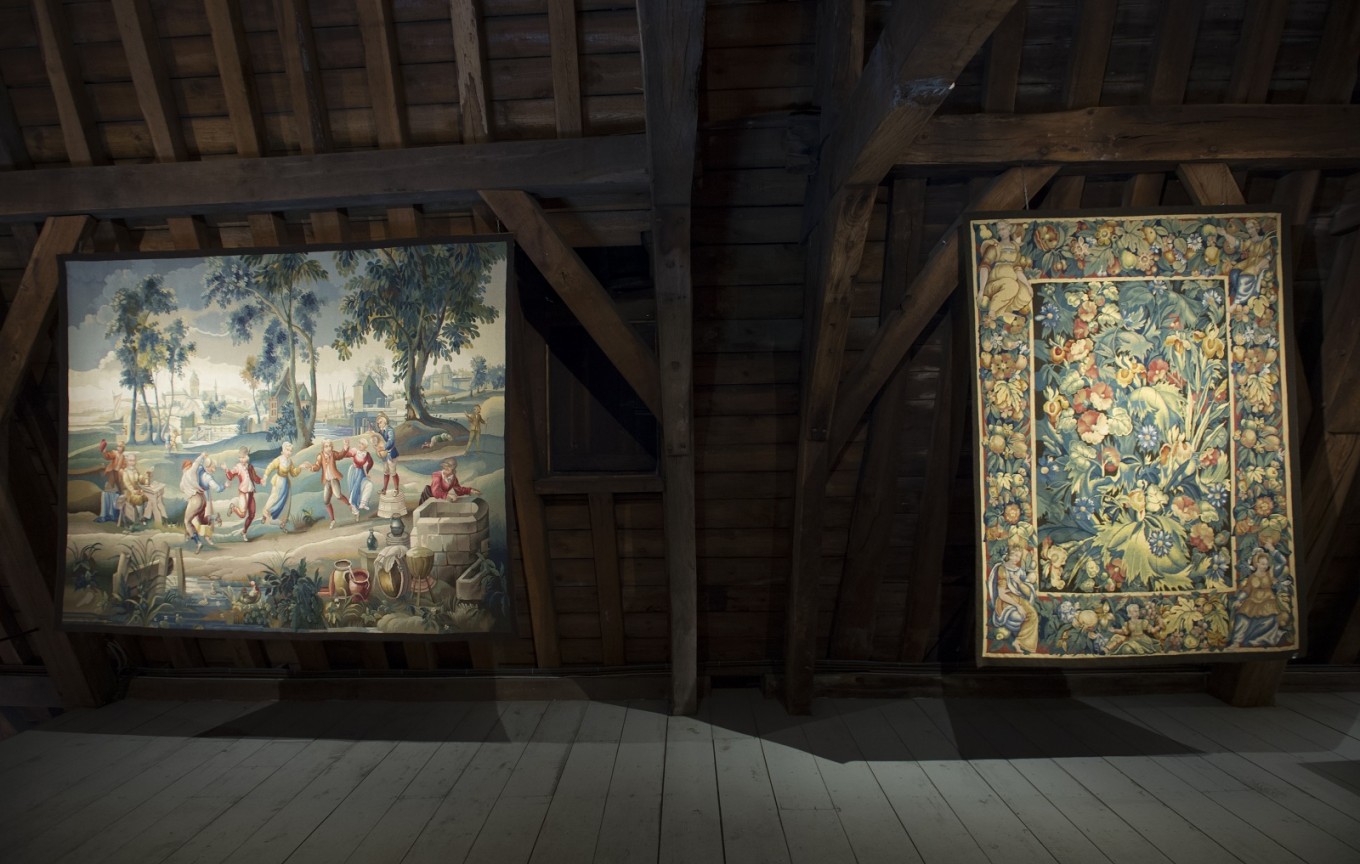 Tucked away in a former abbey in northern Belgium, the world's largest tapestry restorer keeps a lower profile as it goes about fixing up some of the finest ancient drapery ever created.(AFP/John Thys)
Tucked away in a former abbey in northern Belgium, the world's largest tapestry restorer keeps a lower profile as it goes about fixing up some of the finest ancient drapery ever created.(AFP/John Thys)
Museums such as the Louvre in Paris, the Metropolitan Museum of Art in New York and the Hermitage in Saint Petersburg entrust the restorers with their finest pieces in cotton and silk, some with strands of silver and gold.
Based in the northern Flemish town of Mechelen, the Royal Manufacturers De Wit was founded 1889 and is currently the biggest restorer of old tapestries in the world, based on the value of the pieces it restores.
These have included legendary works like "The Lady and the Unicorn", a series of six tapestries woven in wool and silk in Flanders in the Middle Ages, on display at the Cluny museum in Paris.
There is also a collection of 29 enormous tapestries from Saint John's Co-Cathedral in Malta which the restorers have been gradually working through over the past dozen years in a project estimated at around one million dollars.
Difficult to transport due to their enormity, the 17th century Flemish tapestries have been sent to Royal Manufacturers De Wit in pairs.
First cleaned of dust, the artworks are then washed with an enormous spraying machine. Only once they are dried do the restorers set about their work.
Read also: Behind jet's passenger list is rich human tapestry
New techniques
Restoration overtook tapestry making as the mainstay of the business about 40 years ago.
"At the end of the 1970s weaving workshops had a very hard time because tapestries were too expensive and no longer in fashion," says Yvan Maes De Wit, great-grandson of the firm's founder, accounting for the shift towards restoring and conserving historic tapestries.
The company came up with new cleaning techniques, using a combination of suction and spraying to protect the fibres against strain.
Washing dyed cloth is a very risky step in the restoration process, as cotton often frays and silk disintegrates over time and in light.
Read also: Magical Laotian town preserved by UNESCO loses its soul
'Luminous, infinite' colors
The restorers have also had to develop expertise in removing huge tapestries from their hanging places, a delicate task given their size, weight and fragility.
De Wit recalls the stress of a "very dangerous operation", to remove a nine-metre by 14-metre (30-foot by 46-foot) tapestry suspended 25 metres high in the entry hall of the United Nations building in New York, using "gigantic scaffolding".
Meanwhile, his team of restorers, silently hunched over their work, seated on benches in a vast white room, is known, above all, for having an "eye for colour".
The company makes its own silk and cotton threads to match the original historic colours as closely as possible.
"In the industry, you can't find the right colours," says De Wachter.
"So we have to dye them ourselves in our laboratory, with colors which have a high luminosity. That way we can produce infinite combinations."


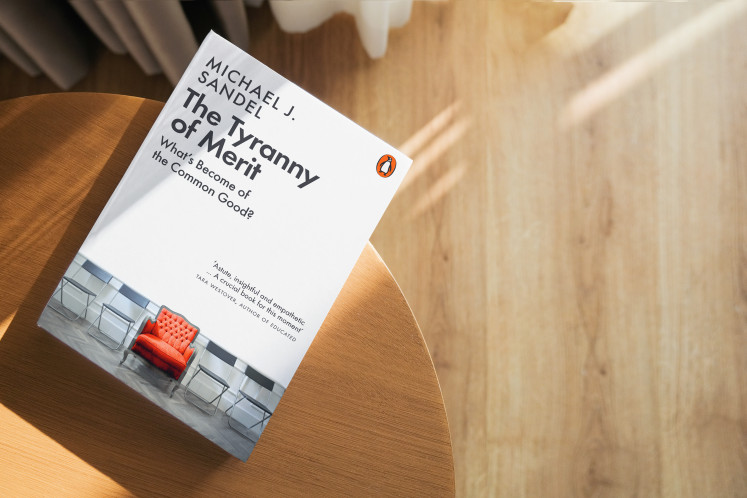



![Let it out: Japanese rocker Hyde holds a solo concert, billed as the Hyde [Inside] Live 2025 World Tour in Jakarta, on Nov. 1, 2025, at Tennis Indoor Senayan in Central Jakarta.
(Courtesy of Sound Rhythm and Mataloka Live)](https://img.jakpost.net/c/2025/11/05/2025_11_05_168574_1762306300._medium.jpg)
